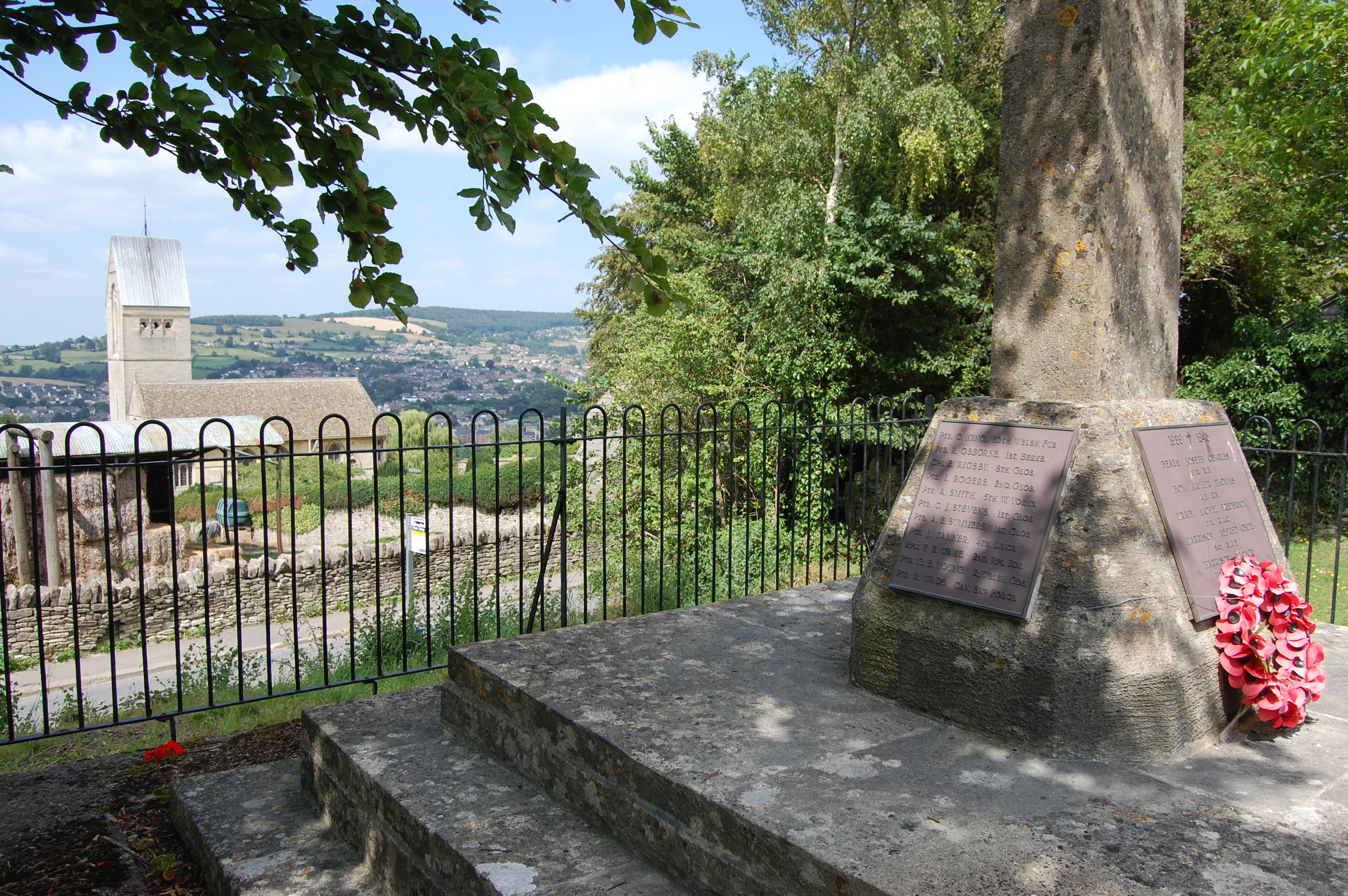The Great War of 1914 -1918 saw the greatest loss of life in a global conflict in modern history. Great Britain lost over 700,000 combatants, many of those on the Western Front in France and Belgium. The huge losses eventually prompted an upsurge in the construction of war memorials. Designed and built at local expense they can be found in every city, town and village in the United Kingdom.
Whilst there were immediate temporary constructions built at the end of the war, (the Cenotaph in Whitehall was initially a wood and plaster construction), most permanent stone structures were erected and consecrated throughout 1919 – 1920. There was no national criteria or protocol of how losses were commemorated but a recognisable theme and style developed. The London Cenotaph we know today was reconstructed in Portland stone and was ready for Armistice Day in November 1920.

Memorials have been adjusted to commemorate losses inflicted during WW2 and smaller conflicts since. It is not uncommon now to find memorials remembering the dead from 1914 to recent decades.
Sadly, there were undoubtedly individuals who were inadvertently omitted, perhaps others who were mistakenly added. Indeed, it is not uncommon to find examples of men who were remembered on more than one memorial. As time goes on, memories fade and generations move on. Detail is overlooked and lost in the passage of time. There is a sad story behind every loss, perhaps too overwhelming to contemplate. In a corner of Gloucestershire there is an example, perhaps unique. It is easy to see but difficult to spot.
In the village of Woodchester near Stroud in Gloucestershire there is a memorial in what is termed as South Woodchester. It commemorates nineteen men from the village who were lost during the First War. Two of them were brothers, my Great Uncles’ Acting Corporal WA (William Albert), Rigsby, aged 19, 10th Battalion Gloucestershire Regiment who was killed at the battle of Loos in October 1915.

His older brother, Acting Sergeant FE (Frederick Ernest) Rigsby, aged 21, 8th Battalion Gloucestershire Regiment was killed on The Somme in October 1916. Their respective substantive ranks were Lance-Corporal and Corporal. They are both also commemorated in France, William Albert on the Loos memorial and Frederick Ernest on The Thiepval memorial on The Somme. Their bodies were never recovered.

The two brothers were in fact were always referred to by friends and family by their respective second names, Albert and Ernest. Two miles away from Woodchester, high up on Selsley Common is the village of Selsley which overlooks Stroud and the valley across to Rodborough Common.
Across the road from All Saints Church in Selsley there is a war memorial, somewhat grander and more prominent than the Woodchester feature. On this structure twenty one men lost in the Great War are remembered. One of them is again my Great Uncle, Corporal Ernest Rigsby. There is also a marble plaque in the church where Ernest is also remembered. Here he is referred to formally as FE Rigsby.

Why would Ernest be remembered on two war memorials just a couple of miles apart. Before Ernest had deployed to France he became engaged to a young girl from Selsley. This was Gabrielle West, the vicar’s daughter. Born in 1890 she was actually 5 years older than Ernest and the second daughter of the Reverend George Herbert West, the Vicar of Selsley between 1906 – 1921. Her elder sister Joan was 9 years older and in 1916 was living and working in London.
One can only imagine what Gabrielle West must have suffered and felt when she learned that her partner Ernest had been killed on The Somme in 1916.
As a respected and prominent part of the community her father must have felt powerless in the face of such an overwhelming personal tragedy. Whilst administering succour and support to his village throughout the war he must have felt the intensity of his younger daughters’ loss.
My good friend Chris Powell, a photographer and artist created this artist’s impression drawing of Gabrielle West at the Selsley memorial. One might consider that it is likely that he has accurately reproduced a scene of crushing sadness and a spectacle enacted by so many throughout the country at the time.

The Selsley memorial was designed and built by a local architect, Thomas Falconer, 1897-1934. The Reverend West included Ernest’s name on the role of honour for his daughter. His inscription was how he was known, Ernest, a close and intimate reference to a brave young man who was intent on marrying his daughter. The Woodchester and Selsley locations are there to see to this day.
Gabrielle West never married or had any children. She became a teacher. She died in Wokingham in October 1990 at the age of 100. My personal regret is I never thought to find her. My Great Aunt Nell, Albert and Ernest’s sister died in 1984. In 1980 I made a trip to France to find her brothers memorials and presented her with enlarged photos. I remember she wept. Our family always remained close and we saw her and other members of the family regularly. Nell’s family still reside near Stroud.
I don’t ever remember asking her about her brothers in detail, something I wish I had done and documented at the time. She would have known Gabrielle.
Her son Winston, my second cousin recently informed me that his Mother had remarked that Ernest had indeed moved to Selsley. Perhaps he had roomed in the large Vicarage which is now a care home, we will never know for sure.

